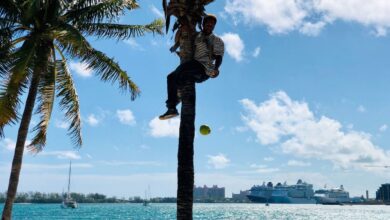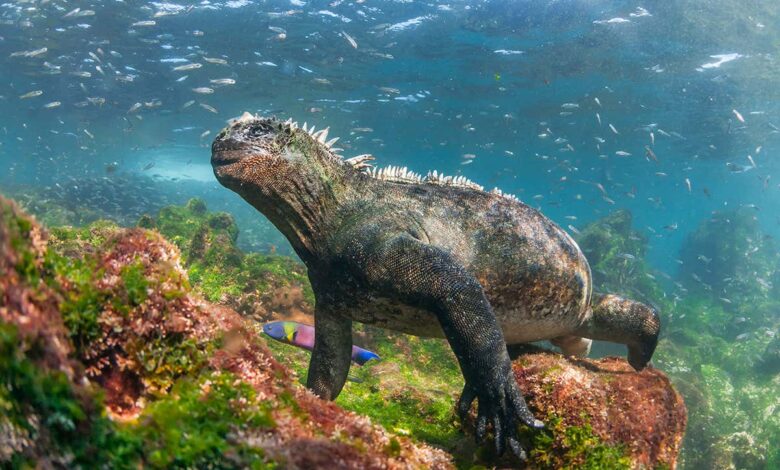
A Primer to the Galapagos Islands Unveiling the Unique
A primer to the Galapagos Islands plunges you into a world of unparalleled biodiversity and geological wonders. From the unique wildlife adapted to volcanic landscapes to the conservation efforts safeguarding these precious ecosystems, this exploration unveils the captivating allure of the archipelago. This guide will delve into the islands’ formation, their rich history, the fascinating creatures that call them home, and the responsible ways to visit this extraordinary destination.
This primer will offer a comprehensive overview, covering everything from the islands’ fascinating geology and unique wildlife to the important conservation efforts in place. Discover the incredible adaptations of endemic species, learn about the challenges facing the islands, and understand how to experience this special place sustainably.
Introduction to the Galapagos Islands
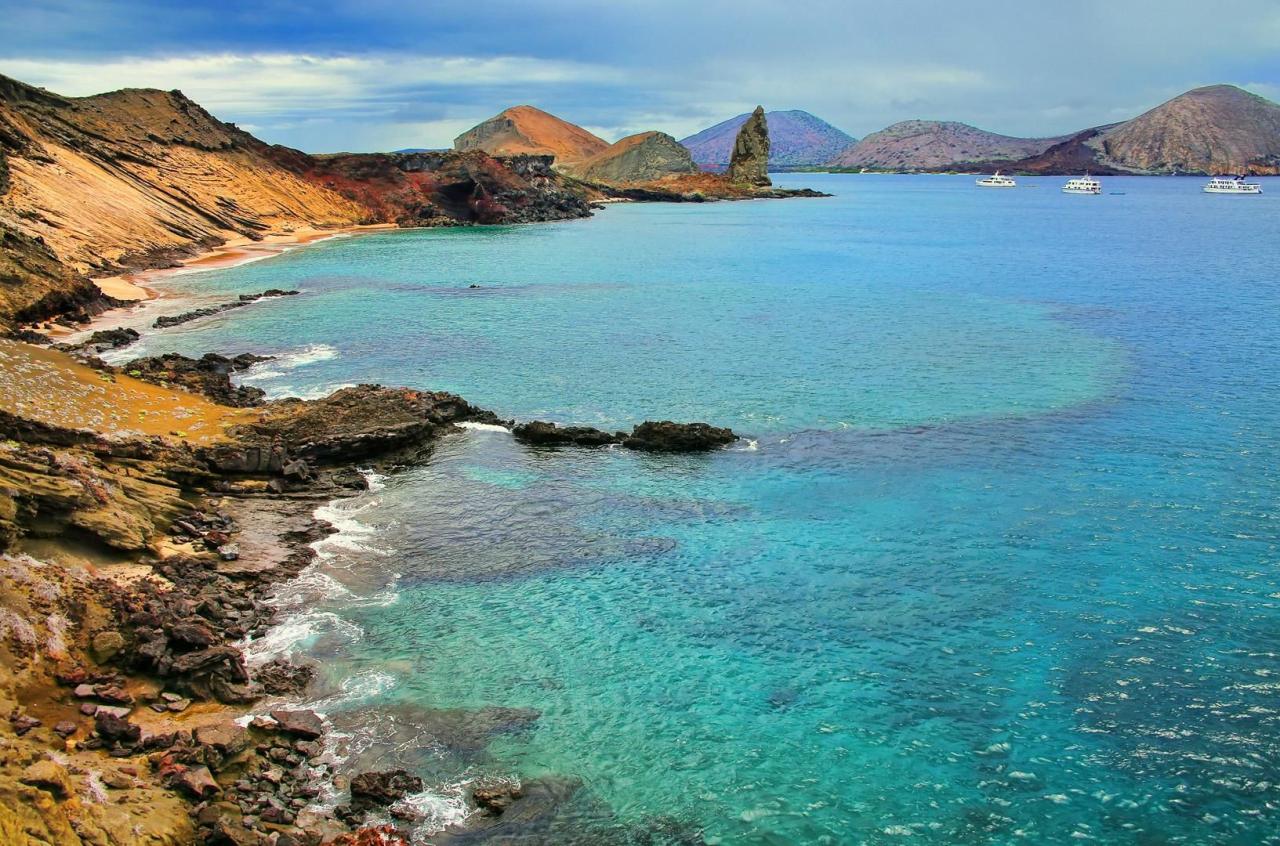
The Galapagos Islands, a volcanic archipelago in the Pacific Ocean, are renowned for their unparalleled biodiversity. Nestled roughly 600 miles (965 km) west of Ecuador, these islands are a treasure trove of unique flora and fauna found nowhere else on Earth. Their isolation and unique geological history have fostered the evolution of extraordinary species, making them a global hotspot for scientific study and conservation efforts.The Galapagos Islands hold immense historical significance, serving as a crucial stepping stone in Charles Darwin’s development of the theory of evolution by natural selection.
His observations of the diverse finch species on the islands, each adapted to a specific niche, provided critical evidence for his groundbreaking work. This pivotal role in scientific history cemented the islands’ importance as a global landmark in biological research.
Galapagos Island Formation and Geology
The Galapagos archipelago is of volcanic origin, formed by the movement of the Nazca Plate over a hotspot in the Earth’s mantle. This process continues to shape the islands, with active volcanoes contributing to their dynamic landscape. The islands vary greatly in age, with some being relatively young and still actively erupting. This geological dynamism is directly responsible for the unique environments and the evolution of endemic species adapted to these conditions.
The varied volcanic formations, from towering peaks to lava flows and craters, create a dramatic and diverse landscape.
Main Islands and Their Characteristics
The Galapagos archipelago comprises 19 principal islands and numerous smaller islets. Each island presents a unique combination of environmental factors and wildlife. The following table summarizes key features of some of the main islands:
| Island | Population (approx.) | Tourism Impact | Unique Wildlife |
|---|---|---|---|
| Isabela | ~30,000 | High, with significant infrastructure | Giant tortoises, marine iguanas, sea lions, frigatebirds |
| Santa Cruz | ~20,000 | Very high, main tourist hub | Giant tortoises, blue-footed boobies, marine iguanas, Darwin’s finches |
| San Cristobal | ~7,000 | Moderate, growing tourist activity | Marine iguanas, sea lions, frigatebirds, Darwin’s finches |
| Floreana | ~2,000 | Moderate, with historical significance | Sea lions, blue-footed boobies, marine iguanas, unique bird species |
This table highlights the variation in population, tourism, and wildlife across the major islands. These factors are important in understanding the ongoing challenges and opportunities for managing these unique ecosystems. Tourism, while vital for economic development, requires careful management to minimize environmental impact and preserve the unique character of the islands.
Unique Wildlife of the Galapagos: A Primer To The Galapagos Islands
The Galapagos Islands, a volcanic archipelago in the Pacific Ocean, are renowned for their extraordinary biodiversity. This unique ecosystem is home to a remarkable array of endemic species, showcasing remarkable adaptations to their island environment. Their isolation has fostered an evolutionary journey distinct from the rest of the world, resulting in a fascinating display of natural selection’s power.These islands, with their diverse habitats, from arid highlands to lush rainforests, have nurtured a unique interplay between species and their environment.
The interplay of evolution and adaptation has led to the extraordinary diversity of wildlife that captivates visitors and scientists alike.
Endemic Species and Adaptations
The Galapagos Islands are a treasure trove of endemic species, meaning they are found nowhere else on Earth. This isolation has allowed these species to evolve in unique ways, often adapting to specific ecological niches. Darwin’s finches, for example, evolved diverse beak shapes and sizes, each tailored to exploit different food sources. This diversification, driven by natural selection, showcases the remarkable plasticity of life.
Natural Selection’s Role
Natural selection plays a crucial role in shaping the unique wildlife of the Galapagos. The islands’ diverse environments, with varying climates and resources, create selective pressures. Organisms best adapted to these conditions survive and reproduce, passing on their advantageous traits to future generations. This constant process of adaptation over time leads to the remarkable diversity seen in the Galapagos.
Famous Galapagos Wildlife, A primer to the galapagos islands
The Galapagos Islands are famous for their distinctive wildlife. Giant tortoises, with their massive shells and slow pace, are iconic symbols of the islands. Their shell shapes vary among different islands, a testament to their adaptation to local conditions. Marine iguanas, the only marine lizard species, are uniquely adapted to a salt-water environment, basking in the sun to regulate their body temperature and feeding on algae.
Blue-footed boobies, with their striking blue feet, are known for their aerial acrobatics and unique mating rituals.
Animal Species and Characteristics
| Species | Diet | Habitat | Physical Features |
|---|---|---|---|
| Giant Tortoise | Herbivore (plants, grasses) | Various habitats, from dry lowlands to highlands | Large, domed shells; varying shell shapes across islands; thick necks and legs |
| Marine Iguana | Algae | Coastal areas; rocky shores; intertidal zones | Scaly skin; short, stubby legs; salt glands to excrete excess salt |
| Blue-Footed Booby | Fish | Coastal areas; nesting colonies | White plumage; striking blue feet; large wingspan; acrobatic fliers |
| Darwin’s Finch | Insects, seeds, fruits | Various habitats; from coastal areas to highlands | Varied beak shapes and sizes; adapted to different food sources |
Conservation Efforts
Conservation efforts are crucial for safeguarding the unique wildlife of the Galapagos. Strict regulations and protected areas are vital for preserving these fragile ecosystems. Monitoring populations, combating invasive species, and educating visitors are essential components of conservation strategies. The Galapagos National Park, established to protect the islands’ unique biodiversity, plays a critical role in preserving this unique ecosystem for future generations.
A primer to the Galapagos Islands often focuses on the unique wildlife, but the islands’ accessibility is equally fascinating. Consider how airlift and cruise ships, like those highlighted in this recent article about airlift and cruise ships help fuel Caribbean growth , are essential to getting there. This, in turn, helps to understand how the delicate balance of tourism and conservation is managed for these amazing islands.
Galapagos Islands’ Ecology
The Galapagos Islands, a volcanic archipelago in the Pacific Ocean, boast a unique and interconnected ecosystem. The islands’ isolation has allowed for the evolution of extraordinary biodiversity, shaped by specific environmental factors and ecological interactions. This isolation has fostered unique adaptations and evolutionary trajectories in plant and animal life, resulting in a remarkable showcase of life’s diversity. Understanding the intricate web of life within the Galapagos is crucial to appreciating the fragility and importance of this remarkable ecosystem.The interconnectedness of the Galapagos’ ecosystems is evident in the complex relationships between marine and terrestrial environments.
Rainwater from the highlands influences coastal vegetation and runoff delivers nutrients to the ocean, creating productive feeding grounds for marine life. The islands’ volcanic landscape, with its diverse habitats, supports a wide array of species adapted to different conditions.
Interconnectedness of Marine and Terrestrial Ecosystems
The Galapagos Islands’ ecosystems are intertwined in intricate ways. For example, marine iguanas, a unique reptile species, graze on algae in the intertidal zones, and their waste contributes nutrients to the surrounding environment. Similarly, seabirds play a crucial role in dispersing seeds across the islands, facilitating plant reproduction. This demonstrates the crucial role of various species in maintaining the health and productivity of the entire ecosystem.
These interconnected relationships form a complex food web, where the health of one part directly impacts the health of the whole.
Galapagos Habitats
The Galapagos Islands exhibit a remarkable range of habitats, each supporting a unique array of species. The archipelago’s volcanic origin has created a variety of terrains, including arid lowlands, humid highlands, and rugged volcanic landscapes. Coastal areas, characterized by rocky shores and sandy beaches, are vital breeding grounds for marine iguanas and sea lions. The highlands, with their cooler temperatures and abundant rainfall, are home to diverse vegetation, including unique species of trees and shrubs, which provide crucial habitat for endemic birds.
A primer to the Galapagos Islands is a fantastic starting point for any traveler, highlighting the unique wildlife and stunning landscapes. While exploring the islands, you might also consider the ample activities offered on a Rhine cruise with Disney, which provides a different kind of adventure. These cruises offer a blend of relaxation and exploration, with various excursions.
A primer to the Galapagos Islands, however, is a must-read for anyone planning a trip there.
The unique characteristics of each habitat have contributed to the evolution of specific adaptations and behaviors in the organisms that inhabit them.
Ecological Processes Shaping Biodiversity
Several key ecological processes have shaped the Galapagos Islands’ exceptional biodiversity. Natural selection, driven by the unique environmental conditions of each island, has favored specific adaptations in various species. Geographic isolation has allowed for the evolution of endemic species, uniquely adapted to the specific challenges and opportunities presented by their island homes. For instance, the Galapagos finches, renowned for their diverse beak shapes, have evolved to exploit different food sources.
Furthermore, the influence of currents and upwellings, which bring nutrient-rich water to the surface, supports high levels of productivity in the marine environment.
Food Web Dynamics
The Galapagos Islands’ food web is a complex network of interactions between producers, consumers, and decomposers. Phytoplankton forms the base of the marine food web, providing sustenance for zooplankton and other organisms. This in turn supports larger marine animals, including fish, marine iguanas, and sea lions. On land, plants serve as producers, supporting herbivores like tortoises and various insects.
Predators, such as birds of prey and land-based reptiles, occupy higher trophic levels. The balance and health of this intricate food web are crucial for the survival and well-being of all the organisms inhabiting the islands.
So, you’re planning a Galapagos Islands trip? A primer is a great starting point, covering the unique wildlife and incredible landscapes. While you’re researching, check out this article on how Jamaica is prioritizing airlifts to boost winter arrivals. airlift a priority as jamaica confident of winter arrivals boost It’s interesting to see how different destinations are handling travel logistics.
Ultimately, the Galapagos Islands await, with their mesmerizing biodiversity and stunning volcanic beauty.
Comparison of Island Ecosystems
Different islands within the Galapagos archipelago exhibit variations in ecological characteristics. For example, Isabela Island, the largest island, displays a broader range of habitats, from arid lowlands to lush highlands, supporting a higher overall biodiversity compared to smaller islands. Conversely, smaller islands often have more specialized ecosystems, potentially supporting endemic species adapted to particular conditions. Understanding the specific environmental pressures and resources available on each island is key to comprehending the unique adaptations and biodiversity of each island.
The interplay of factors such as volcanic activity, rainfall patterns, and proximity to ocean currents influences the specific characteristics of each island’s ecosystem.
Visiting the Galapagos Islands
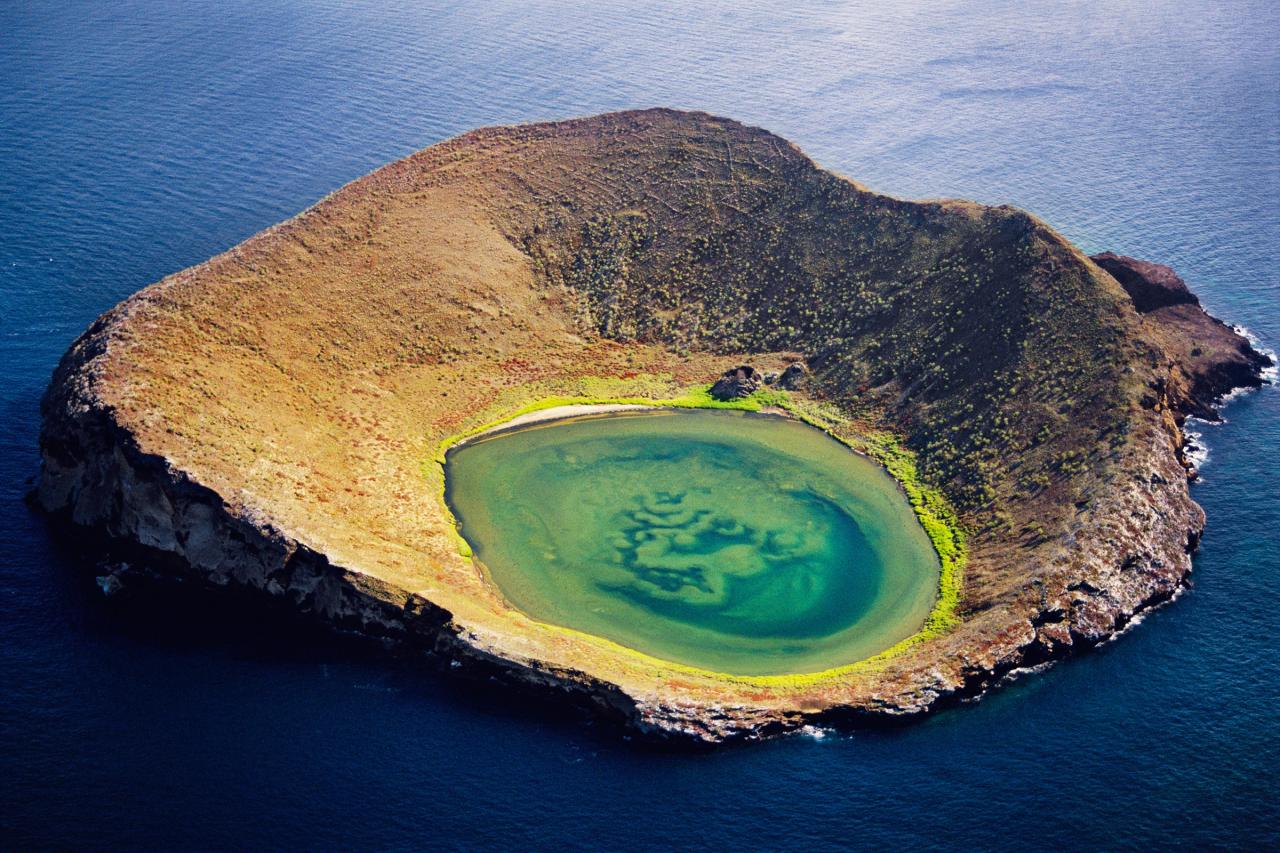
Stepping foot on the Galapagos Islands is a dream for many nature enthusiasts. This archipelago, renowned for its unique biodiversity, demands careful planning and a commitment to responsible tourism. Understanding the necessary travel arrangements, embracing sustainable practices, and respecting local culture are crucial for a meaningful and impactful experience.Visiting the Galapagos is more than just a vacation; it’s an opportunity to connect with a fragile ecosystem and contribute to its preservation.
The islands’ delicate balance requires visitors to be mindful of their actions and to support conservation efforts. This involves understanding the intricate web of life and the importance of minimizing environmental impact.
Essential Travel Arrangements
The Galapagos Islands are a unique destination, requiring pre-arranged travel and adherence to specific regulations. Pre-booking flights, accommodations, and permits is essential, often requiring several weeks in advance, especially during peak season. International flights usually arrive at Baltra Airport (GPS), and domestic flights or ferries connect to other islands. Cruises are a popular choice, offering accommodation and guided tours, while some choose to stay in hotels on certain islands.
Permits for visiting the islands are mandatory and purchased in advance through authorized operators. The cost varies depending on the type of trip and duration.
Responsible Tourism Practices
Minimizing environmental impact is paramount when visiting the Galapagos. Respecting the fragile ecosystem involves avoiding littering, respecting wildlife habitats, and refraining from disturbing nesting sites or feeding animals. Using eco-friendly transportation options, such as guided tours and boats that comply with environmental standards, is encouraged. Choosing accommodations that prioritize sustainability and minimizing your carbon footprint through careful travel choices can make a difference.
Supporting local communities and businesses is vital.
Respecting Local Culture and Customs
The Galapagos Islands have a unique culture shaped by its history and isolation. Respecting local customs and traditions is crucial. Dress modestly when visiting settlements. Engage with locals respectfully and inquire about their traditions and customs. Engage with local guides and learn from their knowledge and experience of the islands.
Respecting the local community’s way of life, and understanding the significance of their customs and traditions is key to a positive interaction.
Types of Tours and Activities
Different tour types cater to various interests and budgets. These tours range from guided land excursions to cruises.
| Tour Type | Duration | Approximate Cost (USD) | Description |
|---|---|---|---|
| Island Hopping Cruise (7 Days) | 7 Days | $3,000-$8,000+ | Includes accommodation, meals, and guided tours on multiple islands. |
| Land-based Tour (3 Days) | 3 Days | $1,500-$3,000+ | Focuses on exploring specific islands with guided hiking and wildlife viewing. |
| Snorkeling/Diving Trip (2 Days) | 2 Days | $1,000-$2,500+ | Designed for water activities, with guided tours and equipment. |
These are just examples, and prices vary significantly based on the time of year, level of luxury, and specific inclusions.
Ethical and Sustainable Travel Experiences
Choosing ethical and sustainable travel experiences involves careful consideration of the tour operators and their commitment to environmental conservation. Look for companies that prioritize responsible tourism practices, use eco-friendly transportation, and support local communities. Support local businesses that focus on sustainable practices. By being mindful of your choices, you can contribute to the preservation of the Galapagos’ unique environment for future generations.
Learn about the specific regulations and guidelines for visiting the islands before your trip. Choosing tours that prioritize conservation and support local communities contributes to a more positive impact.
Conservation Efforts
The Galapagos Islands, a treasure trove of unique biodiversity, face numerous threats from human activities. Protecting this fragile ecosystem requires a multi-faceted approach, involving both local and international efforts. Conservation organizations play a vital role in safeguarding the islands’ future, and ongoing scientific research is crucial for understanding and addressing the challenges.Conservation in the Galapagos is a complex undertaking.
Balancing the needs of the local population with the preservation of the unique ecosystems is paramount. Sustainable tourism, responsible resource management, and effective law enforcement are all essential components of a comprehensive conservation strategy. The islands’ isolation has fostered unique adaptations and evolutionary processes, making their protection an urgent and global concern.
Threats to Galapagos Biodiversity
Human activities are a significant threat to the Galapagos’ unique ecosystems. Overfishing, pollution, and the introduction of invasive species are some of the most pressing concerns. The delicate balance of the island’s food webs is vulnerable to disruption, impacting the survival of many endemic species. Climate change, a global concern, is also contributing to rising sea temperatures, altered precipitation patterns, and increased ocean acidification, all of which pose a serious threat to the islands’ ecosystems and their inhabitants.
Role of Conservation Organizations
Numerous organizations, both local and international, are actively involved in Galapagos conservation. These groups implement various programs aimed at protecting endangered species, managing resources, and educating the public about the importance of the islands’ biodiversity. They work closely with local communities, providing support and training to foster a sense of stewardship. For example, the Charles Darwin Foundation plays a critical role in monitoring populations, supporting research, and developing conservation strategies.
Impact of Human Activities
Human activities have had a profound impact on the Galapagos ecosystem. Overfishing has depleted fish stocks, disrupting the marine food chain. Pollution from ships and land-based sources contaminates the air and water, affecting marine life and impacting human health. The introduction of non-native species, such as goats and rats, has outcompeted native wildlife and altered habitats. These factors contribute to a reduction in biodiversity, making the islands increasingly vulnerable to further ecological damage.
Conservation Projects and Goals
- Marine Protected Areas (MPAs): Establishing MPAs helps safeguard marine ecosystems and protect vital habitats. These areas restrict or prohibit fishing, protecting fish populations and the overall health of the marine environment. The goal is to maintain healthy populations of fish and other marine organisms, ensuring the long-term viability of the marine ecosystem.
- Endangered Species Conservation Programs: Protecting and restoring endangered species is a top priority. Programs often focus on species like the Galapagos tortoise, marine iguanas, and flightless cormorants. Conservation efforts include habitat restoration, monitoring populations, and controlling threats to these species. The goal is to ensure the long-term survival of these iconic species.
- Sustainable Tourism Initiatives: Galapagos tourism plays a significant economic role. Sustainable tourism initiatives focus on minimizing the impact of human visitors on the islands’ ecosystems. The goal is to balance the economic benefits of tourism with the preservation of the environment. This involves limiting visitor numbers, educating tourists, and promoting responsible practices.
Significance of Scientific Research
Scientific research is essential for understanding the complex ecosystems of the Galapagos Islands. Scientists continuously monitor the impact of human activities and natural phenomena on the islands’ biodiversity. This data informs conservation strategies and allows for adjustments to management plans as needed. Through research, scientists identify new threats and develop solutions for their mitigation. For example, research into the impact of climate change on marine ecosystems helps inform conservation strategies to ensure the long-term survival of marine life.
Galapagos Islands’ Culture and History
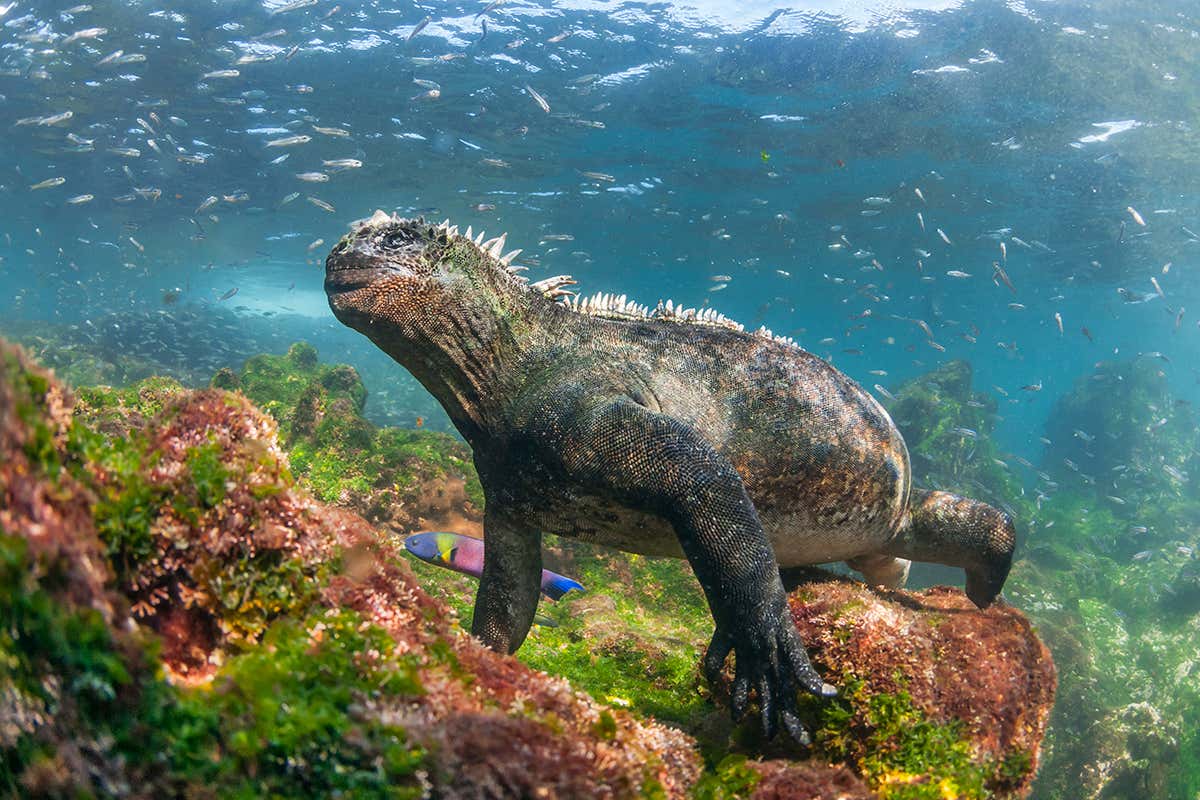
The Galapagos Islands, a unique archipelago in the Pacific Ocean, boast a rich tapestry of history woven from the threads of indigenous populations, European encounters, and scientific exploration. This fascinating blend has shaped the islands’ identity and continues to influence their present. Understanding this history is key to appreciating the delicate balance between conservation, tourism, and the preservation of the islands’ unique heritage.
Indigenous Populations and Traditions
The islands’ indigenous inhabitants, the Rapa Nui, were among the first to inhabit the archipelago. Their presence predates European arrival, leaving behind a rich oral tradition and an intricate knowledge of the islands’ environment. The indigenous peoples’ relationship with the islands was deeply connected to resource management and survival strategies, adapting to the unique challenges presented by the volcanic terrain and diverse wildlife.
Unfortunately, very little is known about their exact presence and traditions due to the lack of detailed written records. Further research is needed to fully understand the pre-European presence and its cultural impact.
European Colonization
European colonization, beginning in the 16th century, had a profound and largely negative impact on the islands. The arrival of Spanish explorers, and later other European powers, introduced diseases that decimated the native populations. The islands were also exploited for resources, including tortoises and other animals. This period marked a significant shift in the islands’ ecology and laid the groundwork for the challenges faced by the archipelago today.
The introduction of invasive species, including animals and plants, further altered the natural balance, a direct consequence of the early colonial era.
So, you’re looking for a primer to the Galapagos Islands? Fantastic! Beyond the incredible wildlife, the experience is seriously enhanced by the activities on board, like the ones amped up on the Avalon ship. Activities amped up on avalon ship will help you make the most of your time there, from snorkeling excursions to guided hikes.
This, in turn, makes for an even deeper appreciation of the unique ecosystem and the island’s fascinating history. Ultimately, a primer to the Galapagos is about more than just the facts; it’s about the immersive experience.
Scientific Significance
The Galapagos Islands hold a unique place in scientific history. Charles Darwin’s observations of the diverse flora and fauna during his voyage on the HMS Beagle profoundly influenced his theory of evolution by natural selection. The islands’ isolation and unique ecosystem provided a crucial laboratory for understanding the mechanisms of adaptation and speciation. Darwin’s insights, documented in his seminal work “On the Origin of Species,” revolutionized our understanding of the natural world.
Historical Quotes
“The volcanic islands of the Galapagos Archipelago, rising abruptly from the deep sea, are among the most interesting objects in the world. The number and variety of the birds, reptiles, and insects are truly surprising, and it is evident that the creatures of this group of islands have been created and modified by natural selection, in a manner that is unparalleled in any other part of the world.”
Charles Darwin, Voyage of the Beagle.
Development of Tourism and its Impact
The rise of tourism in the Galapagos has brought significant economic benefits to the islands, supporting local communities and creating employment opportunities. However, the influx of tourists also presents challenges. Overtourism can put a strain on the fragile ecosystem, leading to habitat destruction, pollution, and disturbance of wildlife. Sustainable tourism practices, emphasizing responsible travel and environmental protection, are crucial to ensure the long-term preservation of the Galapagos’ natural wonders and the well-being of the local communities.
Careful planning and regulation are essential to maintain a balance between tourism development and environmental protection.
Exploring the Islands
The Galapagos Islands beckon with their unique allure, offering a myriad of opportunities to connect with nature’s wonders. From thrilling hikes through volcanic landscapes to exhilarating snorkeling adventures amidst vibrant marine life, the islands provide an unforgettable experience for every visitor. The islands’ diverse ecosystems demand a respectful and mindful approach to exploration, ensuring the preservation of this fragile paradise for future generations.Understanding the best ways to explore the islands allows you to fully appreciate their beauty and learn about their unique ecosystem.
This involves choosing appropriate activities, knowing the best locations, and respecting the environment. Planning your time in the Galapagos with these insights will transform your visit from a mere trip into a truly enriching experience.
Hiking Adventures
The Galapagos Islands boast a stunning array of volcanic landscapes, perfect for hiking enthusiasts. Hiking trails vary in difficulty, offering options for all levels of experience. The rewards are often breathtaking views of unique volcanic formations, marine iguanas basking in the sun, and diverse birdlife.
Ever wanted a primer on the Galapagos Islands? It’s a fantastic destination, filled with unique wildlife and stunning landscapes. Planning your trip just got easier with the new American Cruise Lines agent portal. This new resource will undoubtedly be a huge help to travel agents looking to book Galapagos adventures. The detailed information and streamlined booking process available through American Cruise Lines’ agent portal will allow agents to offer a more comprehensive and efficient experience to their clients, making it easier for them to experience the wonders of the Galapagos Islands.
- Sierra Negra Volcano Hike: This challenging hike ascends to the summit of the impressive Sierra Negra volcano, providing panoramic views of the surrounding islands. The strenuous climb rewards hikers with a vista encompassing the vastness of the Galapagos landscape.
- Tintoreras Island Hike: A moderately challenging hike, this trail offers a unique perspective of the island’s diverse flora and fauna, allowing visitors to encounter various species up close.
- Kicker Rock Trail: A relatively easy hike with a short but rewarding climb to Kicker Rock, a famous spot for spotting sea lions and marine iguanas. The close proximity to the wildlife makes this a popular choice.
Snorkeling and Diving Delights
The Galapagos Islands are renowned for their exceptional marine biodiversity. Snorkeling and diving provide unparalleled opportunities to observe diverse marine life up close. The crystal-clear waters and vibrant coral reefs offer breathtaking spectacles.
- Snorkeling at Bartolomé Island: Famous for its turquoise waters and dramatic volcanic formations, this location is a haven for snorkeling enthusiasts. The diverse fish populations and marine iguanas add to the allure.
- Diving at Darwin’s Arch: This location is a popular destination for divers, providing opportunities to observe marine iguanas, sea lions, and a variety of fish species in their natural habitat. The underwater formations make for a unique experience.
- Snorkeling at Kicker Rock: This shallow reef is a perfect spot for snorkeling, offering clear visibility and abundant marine life, making it an excellent choice for beginners and experienced snorkelers alike. The close proximity to the shore ensures ease of access.
Wildlife Viewing Opportunities
Observing the unique wildlife of the Galapagos is a highlight of any visit. Dedicated wildlife viewing tours are essential for encountering the diverse species, from marine iguanas and sea lions to giant tortoises and various bird species. Careful observation and respect for the animals’ natural behaviors are crucial for a positive experience.
- Spotting marine iguanas on Española Island: The abundance of marine iguanas on Española Island provides an excellent opportunity to observe these unique reptiles in their natural habitat. Their resilience to the harsh environment is fascinating.
- Observing blue-footed boobies at Genovesa Island: Genovesa Island is a renowned spot for observing the remarkable blue-footed boobies. Their distinctive blue feet and impressive mating displays are a spectacle to behold.
- Encountering giant tortoises on Santa Cruz Island: Santa Cruz Island is home to a significant population of giant tortoises. Observing these ancient creatures in their natural environment is an unforgettable experience.
Ideal Time to Visit
The best time to visit the Galapagos Islands is generally during the dry season, from June to September. This period offers pleasant weather conditions, minimal rainfall, and optimal visibility for wildlife viewing.
Hiking Trail Comparison Table
| Trail Name | Difficulty | Attractions |
|---|---|---|
| Sierra Negra Volcano | Strenuous | Panoramic views, volcanic landscape |
| Tintoreras Island | Moderate | Diverse flora and fauna, unique perspective |
| Kicker Rock | Easy | Sea lions, marine iguanas, easy access |
Respecting the Environment
Maintaining the Galapagos Islands’ pristine environment is paramount. Visitors should adhere to strict guidelines, including staying on marked trails, avoiding disturbing wildlife, and minimizing their environmental footprint. This respect ensures the continued preservation of this unique ecosystem for future generations.
Final Summary
In conclusion, a primer to the Galapagos Islands provides a window into a truly remarkable corner of the world. From its dramatic volcanic formations to the unique and awe-inspiring wildlife, the islands offer a captivating journey through evolution, ecology, and conservation. By understanding the islands’ history, ecology, and the importance of responsible tourism, you can appreciate the value of preserving this unique ecosystem for future generations.
Prepare to be amazed!
Clarifying Questions
What is the best time to visit the Galapagos Islands?
The best time to visit depends on your priorities. Dry season (June to November) offers optimal weather for hiking and wildlife viewing, while the wet season (December to May) brings more rainfall but potentially better opportunities to see certain species.
What are the necessary permits for visiting the Galapagos?
You’ll need a Galapagos National Park entrance fee and a cruise or tour operator-issued permit, which often includes the cost of transportation and accommodations. Make sure to research and book in advance.
What are some ethical considerations for visiting the Galapagos?
Respecting the environment and local culture is key. Avoid disturbing wildlife, use eco-friendly transportation, and support local communities. Choose responsible tour operators that prioritize conservation.
How can I support conservation efforts in the Galapagos?
Support conservation organizations working in the Galapagos, such as the Galapagos Conservancy. Also, be a responsible tourist, following all guidelines and minimizing your impact.

